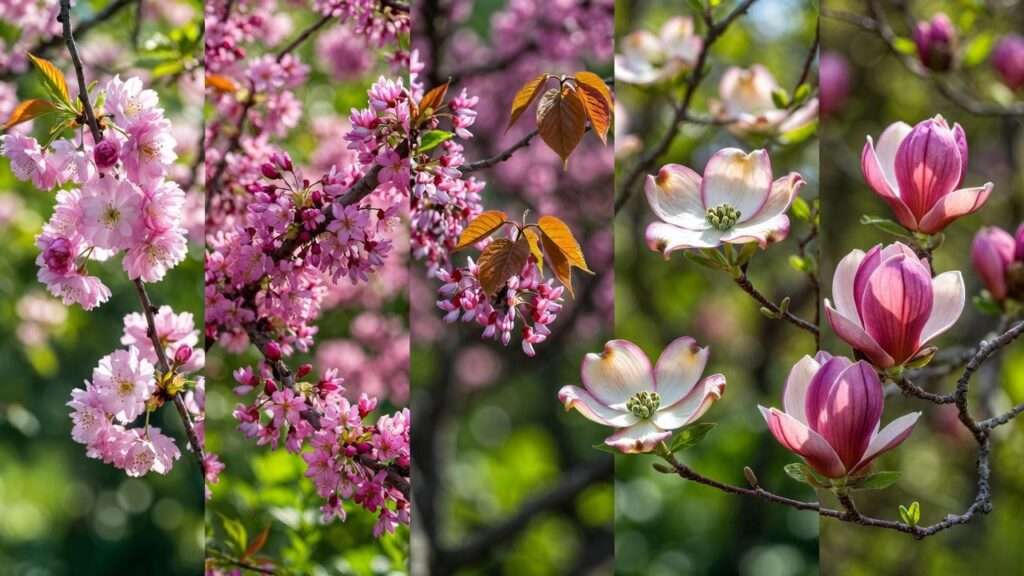Picture your garden ablaze with vibrant pink flowering trees, their delicate blooms swaying in the breeze, drawing bees, butterflies, and admiring glances from neighbors. These stunning trees aren’t just a feast for the eyes—they’re a low-maintenance way to elevate your outdoor space and create a sanctuary of beauty. Whether you’re a seasoned gardener or a beginner dreaming of a colorful yard, pink flowering trees offer charm, ecological benefits, and year-round appeal. In this comprehensive guide, we’ll explore the top five pink flowering trees, share expert care tips, and reveal planting secrets to ensure your garden thrives. Backed by insights from horticulturists and years of tree-care experience, this article will help you choose, plant, and nurture the perfect tree for your space. Ready to transform your garden into a pink paradise? Let’s dive in! 🌿
H2: Why Choose Pink Flowering Trees for Your Garden? 🌼
Pink flowering trees are more than just pretty additions to your landscape—they’re versatile, eco-friendly, and emotionally uplifting. Here’s why they deserve a spot in your garden.
H3: Aesthetic Appeal and Emotional Impact
Nothing says “spring” like a cascade of pink blooms. Pink flowering trees, like cherry blossoms, create a serene and joyful atmosphere, turning any yard into a picturesque retreat. According to a 2023 study by the American Horticultural Society, colorful gardens can reduce stress and boost mental well-being by up to 20%. Imagine sipping coffee under a canopy of soft pink petals—pure bliss! These trees also serve as stunning focal points, enhancing curb appeal and making your home the envy of the neighborhood. 🌸
H3: Ecological Benefits
Pink flowering trees are a boon for local ecosystems. Their nectar-rich blooms attract pollinators like bees and butterflies, supporting biodiversity. For example, crabapple trees not only offer vibrant pink flowers but also produce fruit that feeds birds in fall. By planting these trees, you’re creating a haven for wildlife and contributing to a healthier environment. 🌳
H3: Versatility in Landscaping
Whether you have a sprawling estate or a cozy urban patio, there’s a pink flowering tree for you. Compact varieties like dwarf crabapples fit small spaces, while majestic cherry blossoms suit larger yards. Many of these trees, such as the Eastern redbud, require minimal upkeep, making them ideal for busy homeowners. Pair them with perennials like lavender for a cohesive, low-maintenance garden design. 🌷
H2: The Top 5 Pink Flowering Trees for Your Garden 🌳
Ready to pick the perfect tree? Here are the top five pink flowering trees, complete with care tips and planting secrets to ensure they flourish.
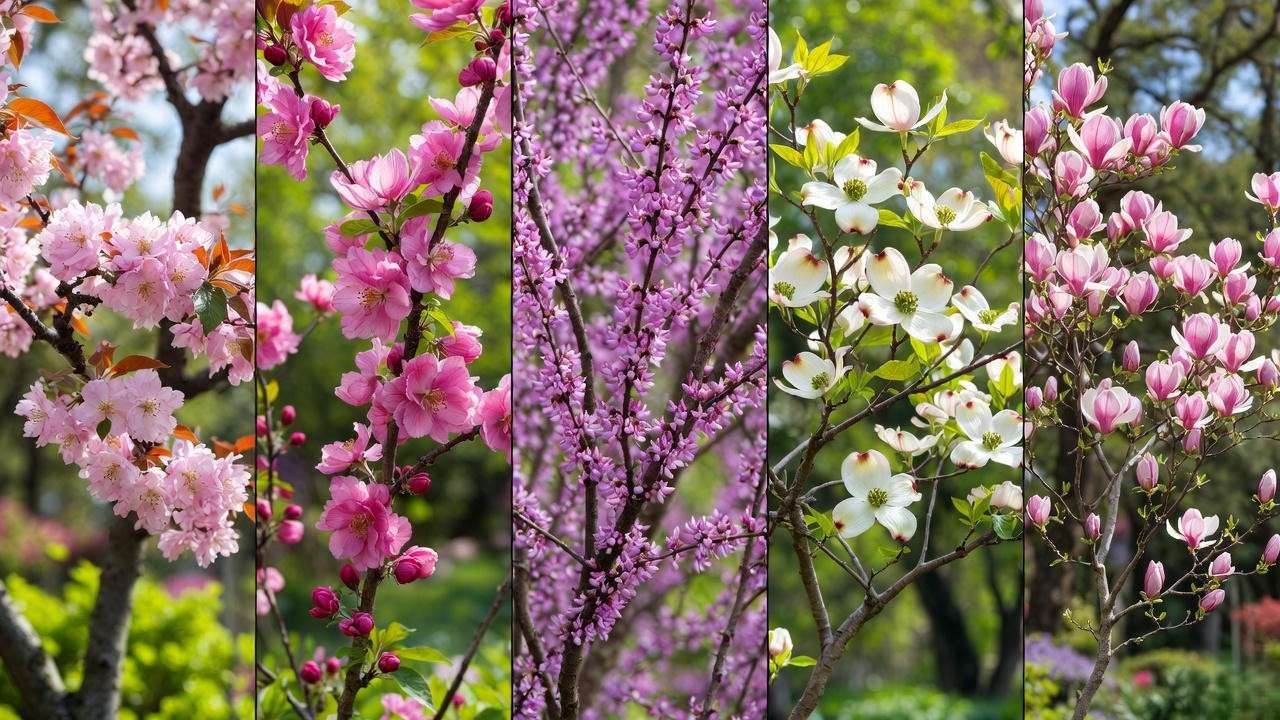
H3: 1. Cherry Blossom (Prunus serrulata) – The Iconic Beauty
Description: Cherry blossoms are the rock stars of pink flowering trees, known for their delicate, cloud-like pink blooms that herald spring. Varieties like ‘Kwanzan’ produce double flowers for extra drama.
Growing Zones: 5–8
Care Tips: Plant in well-drained soil with full sun (6+ hours daily). Water regularly during the first year, and prune lightly after flowering to maintain shape. Avoid over-fertilizing to prevent excessive leaf growth.
Planting Secrets: Ensure proper drainage to avoid root rot—mix compost into heavy clay soils. Apply a 2–3-inch layer of mulch to retain moisture and regulate soil temperature.
Expert Insight: “Cherry blossoms are a cultural treasure,” says Aiko Tanaka, organizer of the National Cherry Blossom Festival. “Their fleeting blooms remind us to cherish beauty in the moment.” 🌸
H3: 2. Crabapple (Malus spp.) – Vibrant and Resilient
Description: Crabapples dazzle with bright pink spring blooms and colorful fall fruit. Cultivars like ‘Prairifire’ offer disease resistance and vivid pink-red flowers.
Growing Zones: 4–8
Care Tips: Water deeply during dry spells, especially in the first two years. Monitor for apple scab, a common fungal disease, and choose resistant varieties. Fertilize with a balanced, slow-release formula in spring.
Planting Secrets: Plant in full sun for maximum blooms. Space trees 15–20 feet apart to allow air circulation, reducing disease risk. Pair with pollinator-friendly plants like coneflowers to enhance your garden’s ecosystem. 🌼
H3: 3. Eastern Redbud (Cercis canadensis) – Heart-Shaped Elegance
Description: Eastern redbuds burst with pink-lavender blooms along bare branches in early spring, followed by heart-shaped leaves. Their compact size makes them perfect for small yards.
Growing Zones: 4–9
Care Tips: Tolerates partial shade but thrives in full sun. Water moderately and avoid soggy soil. Prune only to remove dead wood, as redbuds naturally form graceful shapes.
Planting Secrets: Plant near evergreens for a striking contrast, or use as a border tree for privacy. Add a layer of organic mulch to protect shallow roots. 🌿
H3: 4. Flowering Dogwood (Cornus florida) – Subtle Pink Charm
Description: Flowering dogwoods feature soft pink bracts (petal-like structures) that bloom in spring, followed by red berries and vibrant fall foliage.
Growing Zones: 5–9
Care Tips: Plant in acidic, well-drained soil with partial shade. Avoid overwatering, as dogwoods are prone to root rot. Apply a balanced fertilizer in early spring.
Planting Secrets: Pair with azaleas or rhododendrons for a harmonious woodland garden. Protect from harsh afternoon sun in warmer climates. 🌷
H3: 5. Magnolia ‘Jane’ (Magnolia x hybrid) – Bold and Fragrant
Description: The ‘Jane’ magnolia stuns with large, cup-shaped pink blooms and a sweet fragrance, perfect as a focal point in small gardens.
Growing Zones: 4–8
Care Tips: Protect from late frosts, which can damage buds. Water deeply but infrequently, and use a slow-release fertilizer. Prune minimally to maintain shape.
Planting Secrets: Plant in a sheltered spot to avoid wind damage. Mulch heavily to keep roots cool and moist. 🌸
Comparison Table:
| Tree | Height | Bloom Time | Growing Zones | Maintenance Level |
| Cherry Blossom | 15–25 ft | Early Spring | 5–8 | Moderate |
| Crabapple | 10–20 ft | Mid-Spring | 4–8 | Low-Moderate |
| Eastern Redbud | 20–30 ft | Early Spring | 4–9 | Low |
| Flowering Dogwood | 15–30 ft | Spring | 5–9 | Moderate |
| Magnolia ‘Jane’ | 10–15 ft | Late Spring | 4–8 | Moderate |
H2: How to Choose the Right Pink Flowering Tree for Your Garden 🌸
Selecting the perfect pink flowering tree depends on your climate, space, and aesthetic goals. Here’s how to make an informed choice.
H3: Consider Your Climate and Hardiness Zone
Your USDA Hardiness Zone determines which trees will thrive. For example, cherry blossoms flourish in zones 5–8, while redbuds adapt to zones 4–9. Check your zone using the USDA Plant Hardiness Zone Map (available online). Extreme heat or cold can stress trees, so choose varieties suited to your region’s conditions. 🌡️
H3: Space and Size Requirements
Assess your garden’s size before planting. Compact trees like ‘Jane’ magnolias (10–15 feet) suit small yards, while cherry blossoms (up to 25 feet) need more space. Consider mature tree size to avoid overcrowding. For tight spaces, try a dwarf crabapple or redbud near a patio for shade and beauty. 🌳
H3: Maintenance Preferences
Busy gardeners will love low-maintenance options like Eastern redbuds, which require minimal pruning and pest control. Magnolias and dogwoods demand more attention, especially in harsh climates. Create a checklist: How much time can you dedicate weekly? Are you comfortable with seasonal tasks like mulching or fertilizing? 🌿
H3: Aesthetic Goals
Match your tree to your garden’s style. Cherry blossoms evoke a Japanese-inspired look, while dogwoods suit woodland gardens. Redbuds add cottage charm, and crabapples bring bold color. Pair with companion plants like lavender, hydrangeas, or hostas for a cohesive design. Visualize your dream garden before deciding! 🌷
H2: Planting Pink Flowering Trees: Step-by-Step Guide 🌱
Once you’ve chosen your pink flowering tree, proper planting sets the stage for years of beauty. Follow these expert steps to ensure success.
H3: When and Where to Plant
The best time to plant pink flowering trees is in fall or early spring when temperatures are cool, allowing roots to establish before extreme weather. Choose a site with full sun (6+ hours daily) for cherry blossoms and crabapples, or partial shade for redbuds and dogwoods. Ensure good drainage—standing water can kill roots. For magnolias, pick a sheltered spot to protect blooms from wind. Test your site’s drainage by digging a 12-inch hole, filling it with water, and checking if it drains within a few hours. 🌞

H3: Preparing the Soil
Healthy soil is the foundation of a thriving tree. Test your soil’s pH using a home kit (available at garden centers). Dogwoods prefer acidic soil (pH 5.5–6.5), while crabapples tolerate a wider range (pH 6.0–7.5). Amend clay soils with compost or peat moss to improve drainage, and add organic matter like aged manure for nutrient-poor soils. Avoid planting in compacted or rocky areas, as roots need room to spread. 🌿
H3: Planting Techniques
- Dig the Hole: Make it twice as wide and as deep as the root ball. For a 10-gallon tree, aim for a 2-foot-wide hole.
- Prepare the Root Ball: Gently loosen roots if pot-bound, and remove any damaged ones with clean pruners.
- Position the Tree: Place the tree so the root flare (where trunk meets roots) sits slightly above ground level.
- Backfill: Fill with native soil mixed with compost, tamping lightly to remove air pockets.
- Stake if Needed: Use stakes for tall trees in windy areas, but remove after one year to encourage strong roots.
Visual Aid: Imagine a cross-section of a properly planted tree: the root flare is just above the soil, surrounded by a shallow mulch ring (not touching the trunk). 🌳
H3: Post-Planting Care
Water deeply immediately after planting—about 10 gallons for a young tree. For the first year, water weekly (1–2 inches), adjusting for rainfall. Apply a 2–3-inch layer of organic mulch (like bark or wood chips) around the base, keeping it 2 inches from the trunk to prevent rot. Avoid fertilizing in the first season; let the tree settle. Common mistake: Overwatering can suffocate roots, especially in clay soils. Check soil moisture with a finger test before watering. 🌧️
H2: Ongoing Care for Pink Flowering Trees 🌿
With proper care, your pink flowering trees will reward you with years of stunning blooms. Here’s how to keep them healthy.
H3: Watering and Fertilizing
Young trees need consistent moisture—about 1 inch of water per week for the first two years. Use a soaker hose or drip irrigation for efficiency. Established trees are more drought-tolerant but benefit from deep watering during dry spells. Fertilize in early spring with a balanced, slow-release fertilizer (10-10-10). For dogwoods, use an acid-loving plant fertilizer to maintain soil pH. Over-fertilizing can lead to excessive leaf growth at the expense of blooms, so follow package instructions. 🌸
H3: Pruning for Health and Beauty
Prune pink flowering trees to maintain shape and remove dead or crossing branches. For cherry blossoms and crabapples, prune after flowering to avoid cutting next year’s buds. Redbuds need minimal pruning—just remove damaged wood in late winter. Use clean, sharp tools to prevent disease spread. A common mistake is over-pruning, which stresses trees. As arborist Jane Miller notes, “Less is more—prune only what’s necessary to enhance the tree’s natural form.” ✂️
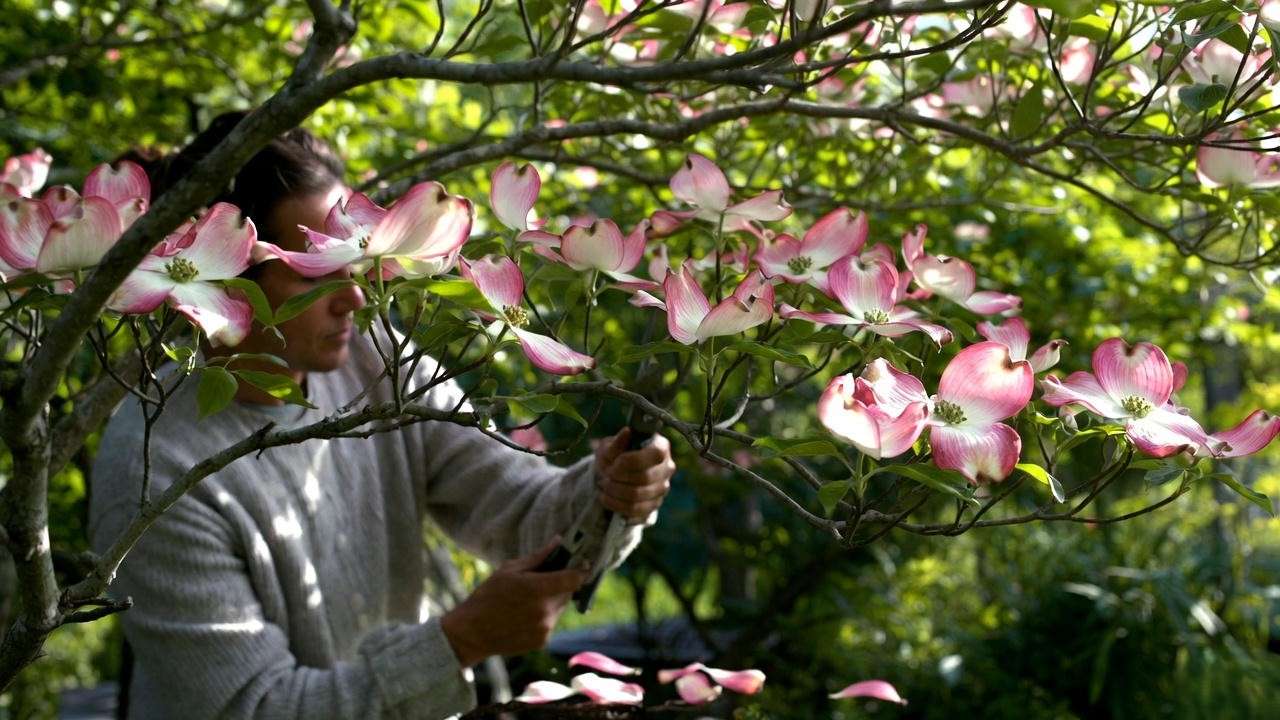
H3: Pest and Disease Management
Watch for common issues like powdery mildew (white coating on leaves) or aphids (small sap-sucking insects). Crabapples are prone to apple scab, a fungal disease causing leaf spots. Choose resistant cultivars like ‘Prairifire’ to minimize problems. Organic solutions include neem oil for pests and copper-based fungicides for diseases. Encourage natural predators like ladybugs by planting companion flowers like marigolds. Regular inspections catch issues early—check leaves and bark monthly. 🐞
H3: Winter Protection
In colder zones, protect young trees from frost and harsh winds. Wrap trunks with burlap to prevent sunscald (cracking from temperature swings). Add a 4-inch mulch layer over roots to insulate them, especially for magnolias, which are sensitive to late frosts. For trees in pots (like dwarf varieties), move to a sheltered area or garage during freezes. 🌡️
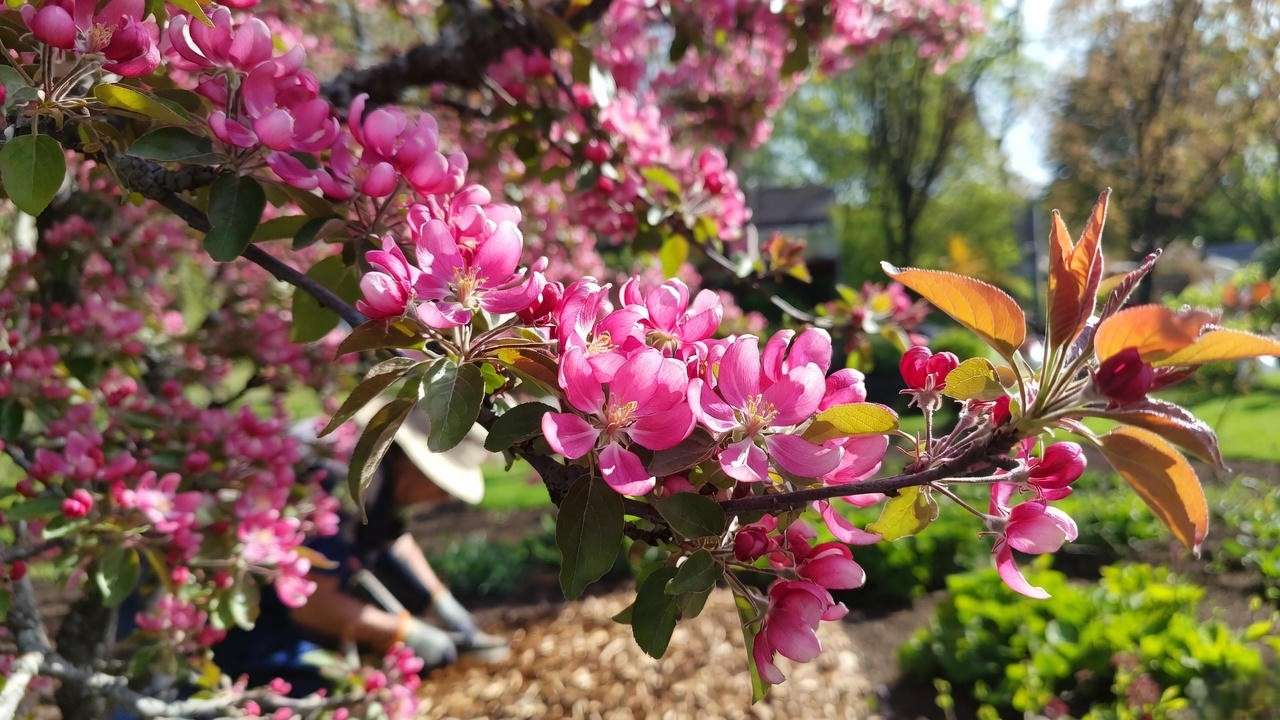
H2: Expert Tips to Make Your Pink Flowering Trees Thrive 🌟
Want your trees to shine? Try these pro tips:
- Tip 1: Install drip irrigation for consistent, hands-off watering—perfect for busy gardeners.
- Tip 2: Test soil pH annually for dogwoods and magnolias to ensure optimal conditions. Kits cost under $15 at garden centers.
- Tip 3: Attract pollinators with nearby native plants like bee balm or coneflowers, boosting bloom health. Expert Insight: “Healthy trees start with observation,” says arborist Dr. Sarah Green. “Walk your garden weekly to spot changes early.” Case Study: Homeowner Lisa in Zone 6 transformed her small yard with an Eastern redbud. “It’s low-maintenance and blooms like a dream,” she says. By pairing it with hostas, she created a shady, pink-hued retreat. 🌷
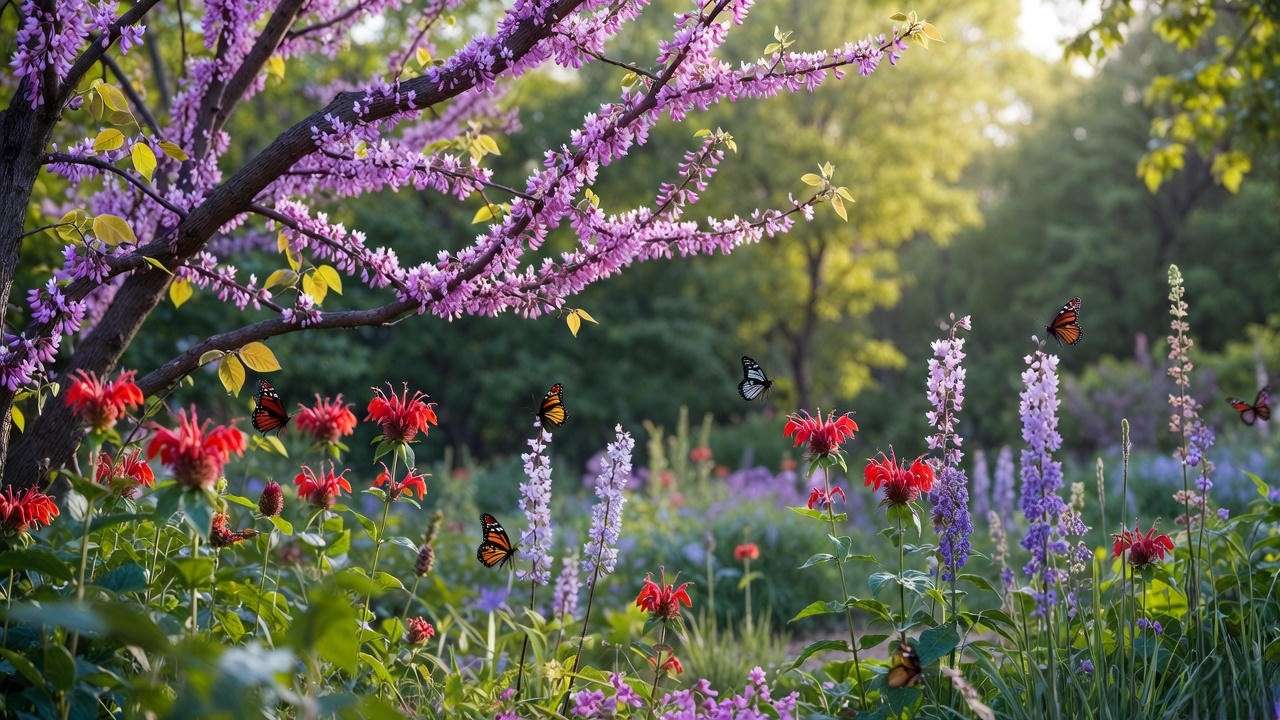
H2: FAQs About Pink Flowering Trees ❓
Q1: What is the easiest pink flowering tree to grow?
Eastern redbuds are a top choice for beginners due to their adaptability, low maintenance, and tolerance for various soils and partial shade.
Q2: Can pink flowering trees grow in shade?
Yes, redbuds and dogwoods thrive in partial shade (4–6 hours of sun). Cherry blossoms and crabapples prefer full sun for best blooms.
Q3: How long do pink flowering trees bloom?
Bloom times vary: cherry blossoms last 2–3 weeks, redbuds 3–4 weeks, and magnolias about 2 weeks, depending on weather.
Q4: Are pink flowering trees pet-friendly?
Most are safe, but crabapple fruit can cause mild upset if pets eat large amounts. Check ASPCA guidelines for specifics.
Conclusion: Create Your Dream Garden with Pink Flowering Trees 🌷
Pink flowering trees like cherry blossoms, crabapples, redbuds, dogwoods, and magnolias bring unmatched beauty and ecological benefits to any garden. By choosing the right tree for your climate, planting with care, and following expert maintenance tips, you’ll enjoy vibrant blooms for years. Start planning your garden today—pick your favorite tree, grab a shovel, and transform your outdoor space into a pink paradise! Share your plans in the comments, or explore our guides on companion plants and spring garden design for more inspiration. 🌸

